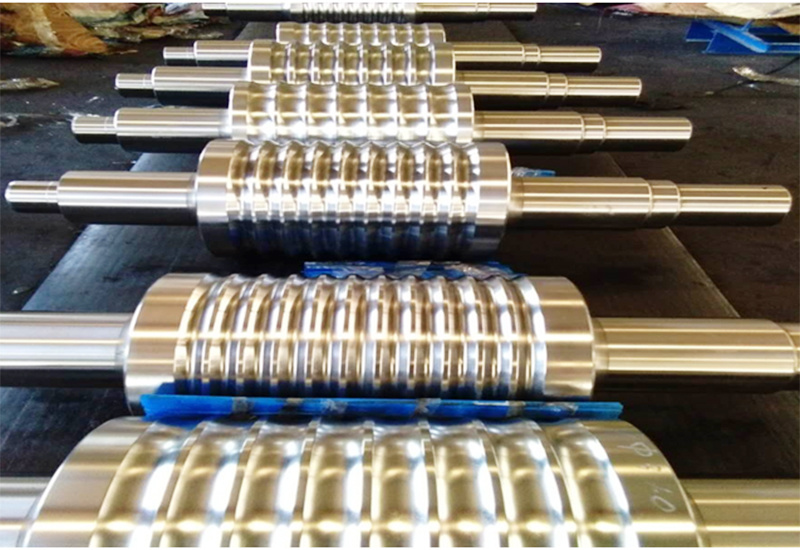
08
2022
-
08
Sharing relevant content about rolling mills
A rolling mill is equipment used in the metal rolling process, generally referring to equipment that completes the entire rolling production process. Its working base consists of Roll rolling mill frame, bearing seat, bearing, independent coiling and uncoiling or decoiling platform, base, roll adjusting device, top roll balancing device, and roll changing device. Rolls are the main working parts and tools for continuous plastic deformation of metal on rolling mills, mainly consisting of a roll body, roll neck, and shaft head.

The roller bearing position of the reciprocating grinder is worn, with a wear depth of 0.7 mm and a journal of 500 mm. The repair material has good machinability and meets the processing requirements of turning, milling, planing, and grinding, and is not affected by thermal stress during the repair process. Moreover, the bonding performance of this material is also very good. At the same time, during the repair of the worn surface, the surface bonding area and bonding force are increased through surface oil baking, surface grinding, anhydrous ethanol cleaning, etc., to ensure that the material will not fall off.
For roll repair, the advantages of Sorel carbon nanopolymer material repair technology far exceed the above points. Strengthen predictive maintenance, using the Internet and sensor technology to assist users in 24/7 online monitoring, intelligent early warning and diagnostic analysis, timely discovery and elimination of equipment hidden dangers, risk prevention, and reduction of equipment operating costs. Focusing on the core concerns of customers, using industrial Internet, AR virtual reality and other new generation information technologies, we build a product capability ecosystem of "data chain", "service chain" and "supply chain" to achieve the development of user needs and solution capabilities.
Influence Roll The factors affecting quality are as follows:
Methods and standards for checking roll quality include: material porosity, WC grain size, total carbon and free carbon content, density, hardness, magnetic saturation intensity, coercive force, bending strength, impurity content, etc. In addition, the processing accuracy and surface roughness of the rolls are also considered.
Each indicator reflects the quality and performance of the rolls. The main influencing factors are: the dispersibility, particle size and particle size distribution of WC powder and Co powder in the mixture, the content of total carbon, free carbon, oxygen and iron; the type and quantity of adhesive used for pressing, the temperature and time of degumming, the temperature, time and atmosphere of sintering, etc. In addition, the roll processing accuracy and diamond wheel quality also affect the roll quality.
Rolls are widely used in various fields of metal plastic processing. Rolls are suitable for non-ferrous metals, steel, hot-rolled wire rods, tubes, cold-rolled foils, and threaded steel, etc. However, if there are customized or specification requirements, find a reliable customization. The roll is made of tungsten carbide and cobalt powder powder metallurgy. Due to the high-speed and high-stress operation of the finishing mill, cast iron rolls and tool steel rolls have been replaced by combined rolls due to their poor wear resistance, short roll life, frequent maintenance and loading and unloading, affecting efficiency. They can no longer meet the requirements of fine processing production, but the rolls have a long service life and high wear resistance.
There are many grades of rolling groups. Even the same finishing mill has different structures, and the corresponding roll components of different stands Roll are also different. The rolls of high-speed wire rod mills are mainly tungsten carbide rolls with cobalt as a binder. Due to poor water quality, some continuous casting and rolling mills also use tungsten carbide rolls containing Co-Ni-Cr as a binder, which is also less expensive. The microstructure consists of the matrix phase WC and the binder phase Co. With the increase of WC content, the hardness of cemented carbide rolls increases with the increase of content, while the toughness changes with the increase of binder phase content.
Roll
Previous Page
Innovation-driven, win-win cooperation
2025-06-17
